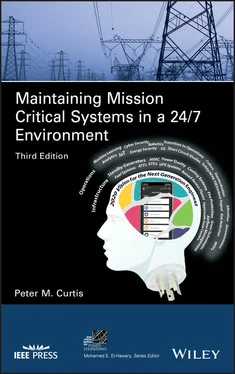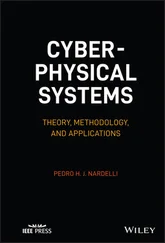Update the project budget with proper adjustments from the received vendor and contractor bids. Contingency can be reduced now that base costs are received but not eliminated! Unforeseen construction issues, last‐minute design changes, or Owner changes will cause cost increase to occur.
3.7.1 Data Center Certification
In addition to the previously mentioned design considerations, The Leadership in Energy and Environmental Design (LEED) Certification is also important to consider. LEED is an internationally recognized green building certification system developed by the US Green Building Council and should not be overlooked when designing a data center. LEED Certification will look great for customers as well as the boardroom since its implementation requires energy efficiency improvements. While initial costs for LEED certification are 2‐4% higher than standard building construction, it theoretically results in an energy savings annually over the facility's lifecycle. LEED has yet to develop specific standards that apply to data centers in the accreditation process in its current version 2.2. LEED BD+C: Data Center (Building Design and Construction) has been developed and rolled out to the masses. It is aimed at remediating special data center conditions as compared to typical office building LEED requirements. In addition, LEED 2009 introduced a new method of weighting credits and systems, such as LEED Bookshelf, that will allow the creation of new credits, which is very promising for data centers’ energy challenges.
Certification involves categories such as sustainable sites, water efficiency, energy & atmosphere, materials & resources, indoor environmental quality, renewable power, innovation & design, and regional priority. A 100‐point scale with 10 bonus points is assigned to these categories, and there are four levels of certification: certified, silver, gold, and platinum. The most points can be earned in the Energy & Atmosphere category. They are given for building designs that are capable of tracking building performance, managing refrigerants in order to reduce CFCs, and renewable energy use.
Many data centers have attained LEED certifications in an effort to curb energy consumption and reduce GHG’s. One of the first data centers in the world to achieve LEED Platinum was the Citigroup Data Center in Frankfurt, Germany, in April 2009. Some features implemented to achieve certification were the use of fresh air free cooling, reverse osmosis water treatment in cooling towers to reduce water use, a vegetated roof, a vegetated green wall irrigated using harvested rainwater, extensive use of server virtualization, and a data center layout that reduces required cabling by 250 km. New data center designs should take these practices and expand on them in order to achieve LEED Certification.
Another internationally used rating system similar to LEED is the Building Research Establishment Environmental Assessment Method (BREEAM), which is based in the United Kingdom. As you can see from its title, BREEAM is an environmental assessment method for all types of new and existing buildings that provides best practices for sustainable design. BREEAM has a set of standard categories in which a building can be assessed under called schemes. The array of schemes they provide covers a wide range of facilities, including prisons, schools, offices, and industrial factories. There is incredible flexibility with this system because if there is a building that does not fall under standard categories, BREEAM will develop a customized criterion to evaluate the building. When trying to attain BREEAM certification, the ratings that can be attained include Pass, Good, Very Good, and Excellent.
In 2010 BREEAM has launched its new scheme called BREEAM Data Centres to evaluate the environmental performance of data centers. Data Centers are unique environments as they have limited employees but still use huge amounts of energy. In addition, the intensive energy use will only increase with rising computing needs and demands. According to BREEAM, this new framework could reduce energy use in data centers by more than 50% 2 . Over the next year, it is hoped that this new scheme will be refined even further to provide the design, construction, and operation of data centers with the most efficient and effective standards possible.
3.8 The Evolution of Mission Critical Facility Design
To avoid downtime, facilities managers also must understand the trends that affect the utilization of data centers, given the rapid evolution of technology and its requirements on power distribution systems. The degree of power reliability in a data center will impact the design of the facility infrastructure, the technology plant, system architecture, and end‐user connectivity.
Today, data centers are pushed to the limit. Servers are crammed into racks, and their high‐performance processors all add up to outrageous power consumption. In the early 2000s, data center power consumption increased by about 25% each year, according to Hewlett Packard. The load in DC’s has leveled off in my mind. They were designed for 200 or 300W/sq. ft. at one time, and they never came close to that rating. 100W to 200W/sq. ft. is more common today and offers sufficient power and cooling for these loads. At the same time, processor performance has gone up 500%, and as equipment footprints shrink, the free floor area is populated with more hardware. However, because the smaller equipment is still rejecting the same amount of heat, cooling densities are growing dramatically and are rapidly consuming more floor space. Traditional design using watts per square foot has continued to grow and can also be calculated as transactions per watt. All this increased processing power generates heat, but if the data center gets too hot, all applications grind to a halt.
Electrical power is easy to design by serving each cabinet with an A and B UPS power source sized to support the IT load within the cabinet. Note the data center industry is now predominantly dual corded equipment fed by 208V power, making it more efficient than the old 120V single‐phase power standard. These cabinet feeds are typically 20A, 208V single phase circuits or 3‐phase 30A or 60A, 208V circuits for large IT installations. Cooling, on the other hand, to remove the heat is more complex to design and maintain since cold air cannot be easily adjusted to each cabinet to neutralize its heat output and data processing board requirements. Underfloor air distribution with a 36 or 48‐inch raised floor may be required for the high heat densities. Other data center operators have been successful with equipment cabinets on the floor slab with an overhead air supply in “cold aisles” and hot air returning to the CRAH units in the hot aisles. Another method to increase heat removal and efficiency is installing cold or hot aisle containment. The cold (or hot) aisle is closed off at each end with doors, and a barrier is extended up to the ceiling to ensure the maximum amount of cold air is supplied to the IT equipment intakes. For hot aisle containment, the hot aisle is barriered to remove the exhausted cabinet heat quickly and not short cycle back to the cold aisle.
Many data center designers (and their clients) would like to build for a 20‐year life cycle, yet the reality is that most cannot realistically look beyond 2 to 5 years. As companies push to wring more data‐crunching ability from the same real estate, the lynchpin technology of future data centers will not necessarily involve greater processing power or more servers, but improved heat dissipation and better airflow management.
To combat high temperatures and maintain the current trend toward more powerful processors, engineers are reintroducing old technology: liquid cooling, which was used to cool mainframe computers decades ago. To successfully reintroduce liquid into computer rooms, standards will need to be developed, another arena where standardization can promote reliable solutions that mitigate risk for the industry.
Читать дальше












